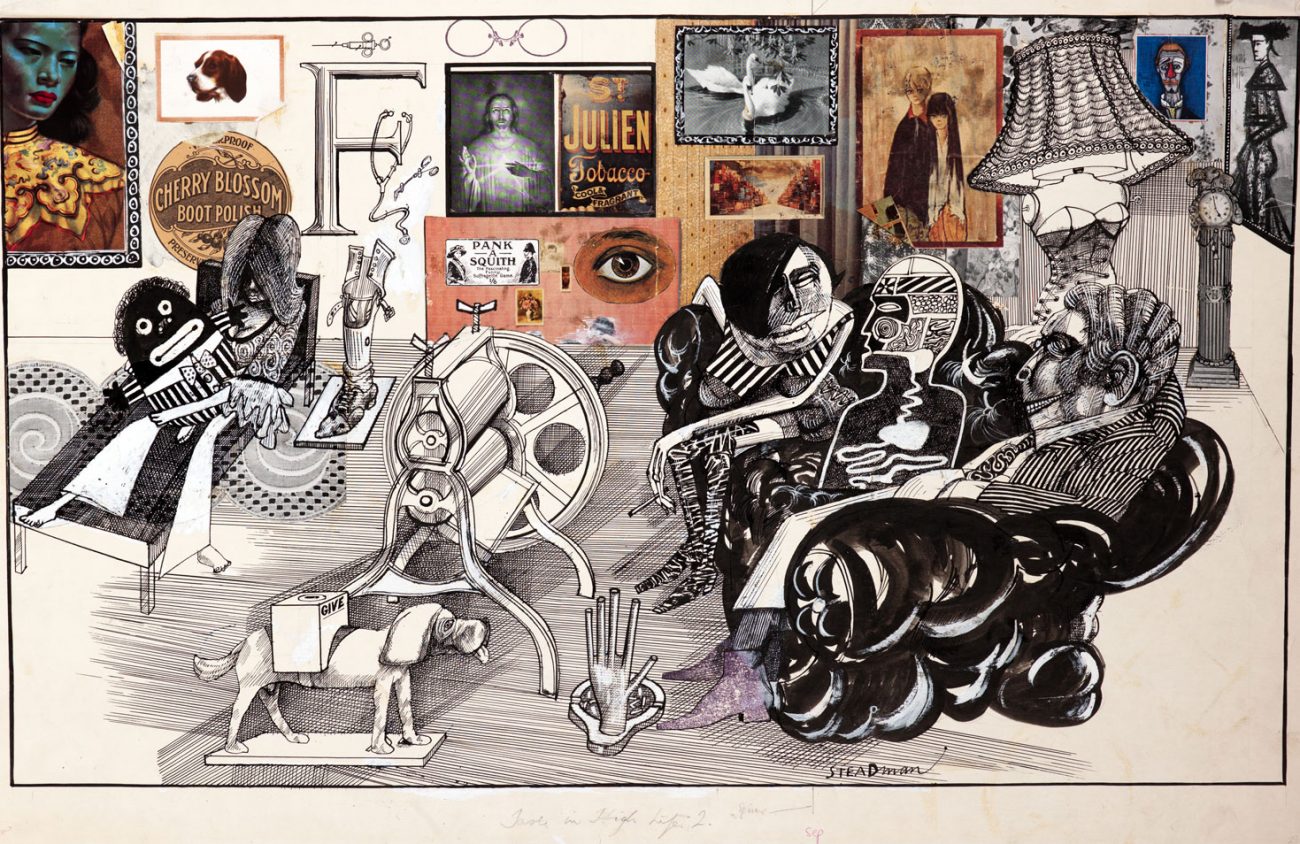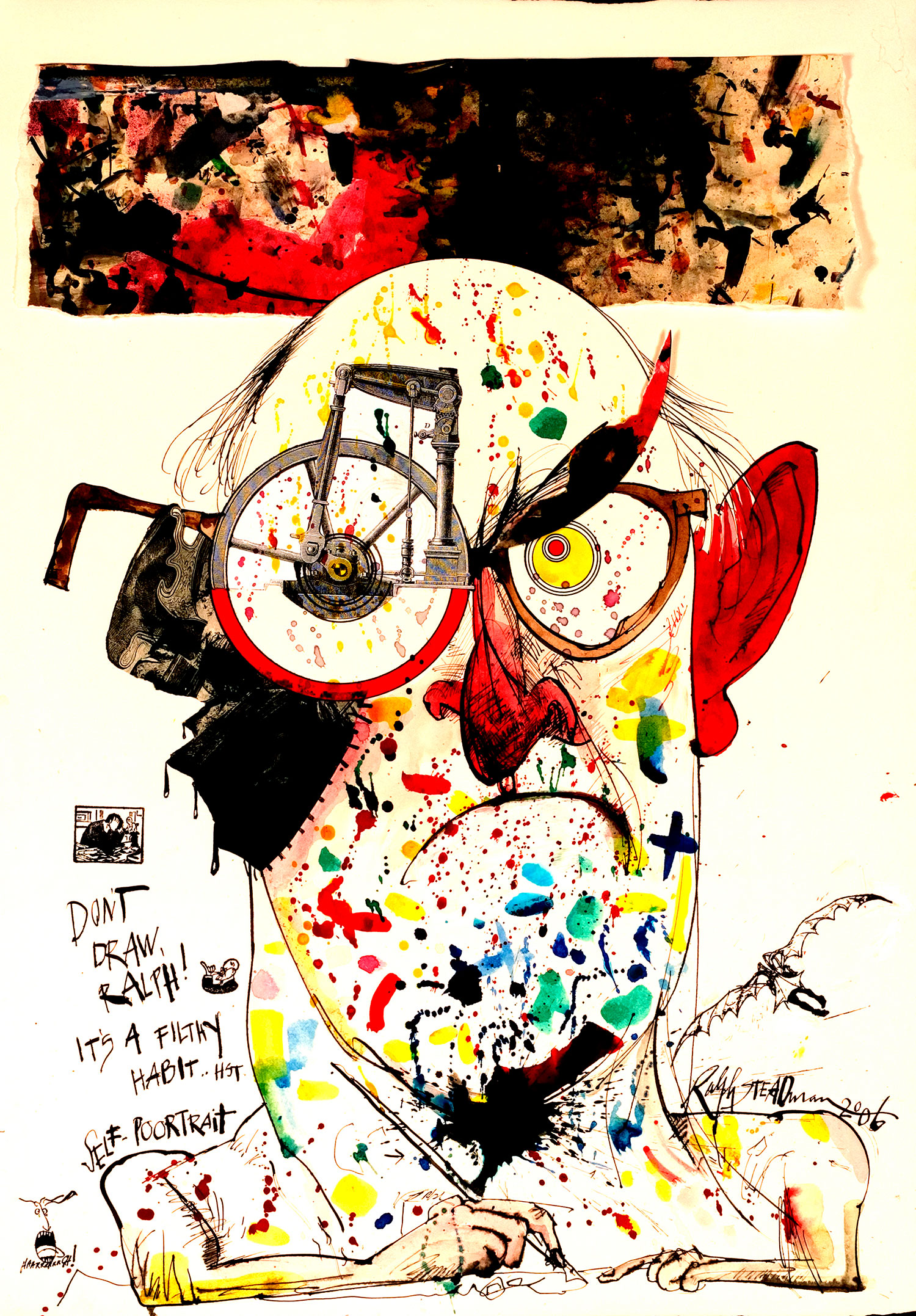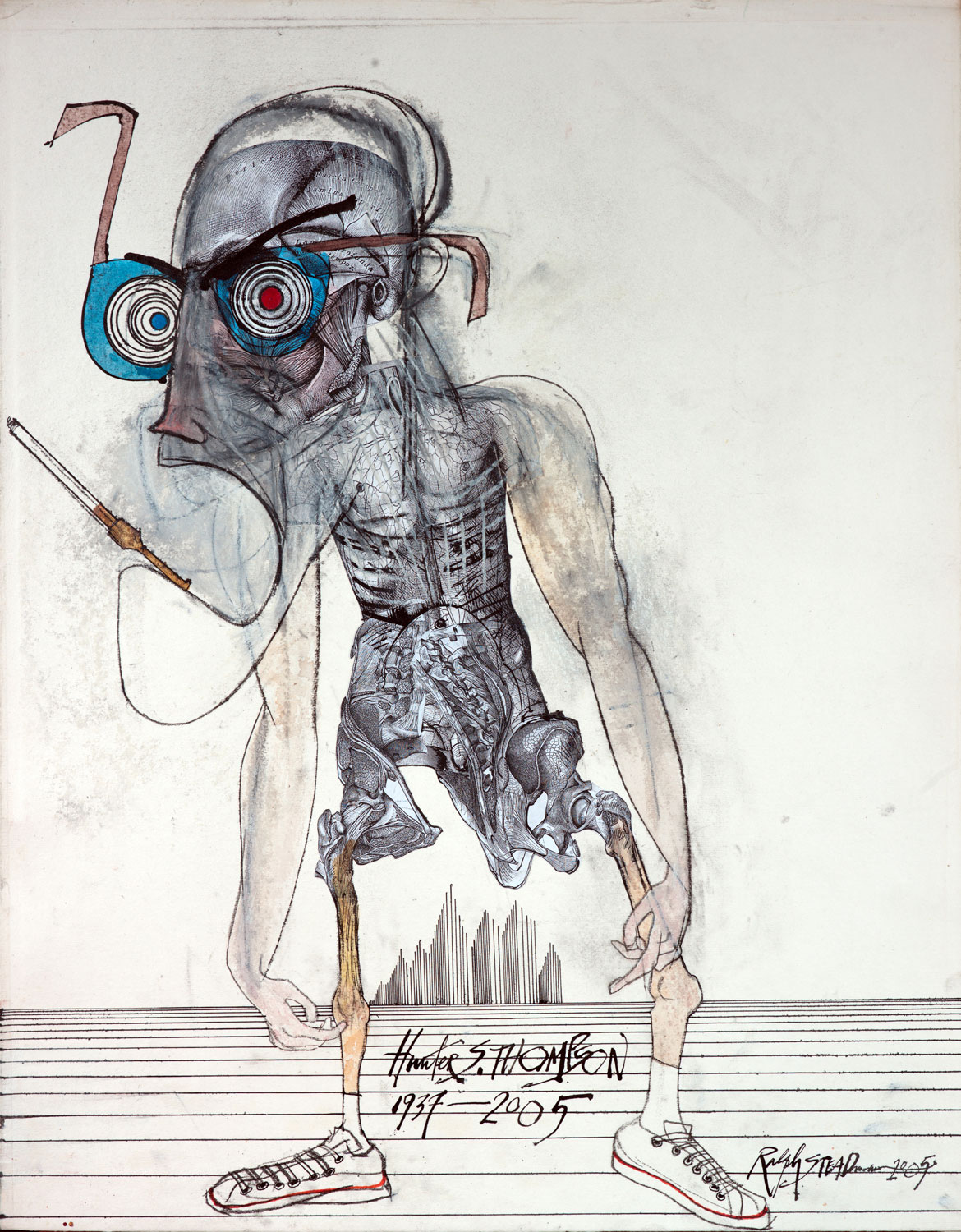If you don’t know the name Ralph Steadman, don’t worry: You’ve still probably seen his work.
It was Steadman, a relatively quiet and civilized Welsh artist and illustrator, who would define the outrageous look of what came to be known as “gonzo journalism” in the 1970s through his collaboration with the late Hunter S. Thompson.
A retrospective of Steadman’s work from his student days in the 1950s through the present opens Friday, Oct. 4, and runs through Jan. 19 at the Jordan Schnitzer Museum of Art at the University of Oregon.
Steadman is best known in the U.S. from his drawings that accompanied Thompson’s 1971 novel Fear and Loathing in Las Vegas: A Savage Journey to the Heart of the American Dream.
The two men had met in 1970 while on assignment for Scanlan’s Monthly covering the Kentucky Derby. They immediately hit it off, Steadman says in a phone call with Eugene Weekly last summer from his home in Kent, England.
“When we met Thompson said, ‘What’s that weird growth on your chin?’” Steadman recalls. “At that time — that was nearly, whoa, 49 years ago — beards weren’t as fashionable a thing in Kentucky.”
He got the Scanlan’s assignment when Thompson, who had already been signed on to cover the derby, told Scanlan’s editor and co-founder Warren Hinckle III he needed an illustrator who was “somebody with a really peculiar sense of humor, because this is going to be a very twisted story. It’ll require someone with a serious kink in his brain.”
Hinckle had his art director track Steadman down and give him this offer: “How would you like to go to Kentucky and meet an ex-Hell’s Angel who’s just shaved his head?”
When the article, “The Kentucky Derby Is Decadent and Depraved,” appeared in print, Boston Globe writer Bill Cardoso wrote it was “pure GONZO!,” inventing a label that has stuck in the history of journalism.
In an anthology he edited of Thompson’s letters, author Douglas Brinkley writes that the two men’s work “changed the face of modern journalism” with Thompson’s exuberantly freeform writing and Steadman’s “perversely exact illustrations… drawn in lipstick to shock the unprepared reader.”
In an interview with EW, the 83-year-old artist’s train of thought barrels from topic to topic. Asked about Fear and Loathing in Las Vegas, he pivots into discussing a different book.
“I was looking at a copy of my [1990] book here, called Tales of the Weird,” he says. “You know, it’s quite a funny book. I mean, I haven’t looked at it for ages. I happened to see one here in [his daughter] Sadie’s office and uh, it’s quite weird. I was bloody weird once. I used to do very strange things. I try to avoid it now.”
He and Thompson continued to work together and remained friends up to the time of the writer’s death. “Let’s face it,” Steadman says. “He was a real character, right? A weird guy. And of all the people I should meet in America, it had to be him, you know?”
Steadman says his art was heavily influenced by Carl Giles, a British newspaper cartoonist known simply as Giles who created a fictional “Giles family” in his single-panel cartoons just after World War II.
“Giles worked for the Daily Express. There was Giles, and his grandma and family, who was in fact Giles’ family,” Steadman says. “He had a family, you know, and I loved that. In fact, I started doing a book of tramps based on his style, you know, but I never finished it. I remember the tramp sits on a seat, a park seat next to a lady and old ladies sitting there after an afternoon walk, you know. And when this tramp sat down next to her, she tried to move away. He puts his legs up and puts his head in her lap.”
Steadman’s combination of art and journalism has deep roots in European art history, from England’s William Hogarth, who was both a popular painter and an editorial cartoonist, to Spain’s Francisco Goya and his etchings titled “The Disasters of War.” But Steadman took things further, developing a monstrous and yet finely detailed grotesquerie in his images.
Steadman misses Thompson, who shot and killed himself in 2005.
“It was the saddest thing when he committed suicide,” the artist says. “He did say to me, in the ’90s, ‘I feel real trapped in this life role.’ I didn’t know why. But he could commit suicide at any moment. He had 23 loaded guns at his farm, you know. Right. And I said, ‘No! Don’t do it!’ you know, but he, one of these days, I mean, he did. His son and his wife were in the next room.”
The retrospective at the JSMA includes work Steadman did with Thompson as well as his illustrations of such works as Alice in Wonderland and Treasure Island.
Organized by the nonprofit Ralph Steadman America, the show opened earlier this year at the University of Kentucky Art Museum and was later exhibited at the Kansas City Public Library.
The JSMA exhibit opens to the public with a reception from 7 to 9 pm Friday, Oct. 4.
Original plans for the exhibition included appearances by Steadman, but he couldn’t make the trip. At 2 pm Saturday, Oct. 5, his daughter, Sadie, will give a free talk, “Steadman on Steadman,” at the museum.
At 10 am Saturday, Oct. 12, Steadman and his daughter will talk via Skype at the museum.
Charlie Paul’s 2012 American-British documentary For No Good Reason, which explores art through Steadman’s vision, will be shown 7 pm Wednesday, Oct. 16.
For more programming connected to the show, see JSMA.uoregon.edu/SteadmanPrograms.


